The International Stereoscopic Union (ISU) is the only international 3D association in the world. Founded in May 1975, the ISU is a club of 3D enthusiasts as well as a club of stereo clubs. The ISU's members currently number over 1,050 and come from 41 countries.
3D photography, 3D video imaging, computer stereo, holography, virtual reality and other stereoscopic photography techniques are used by members of the ISU.
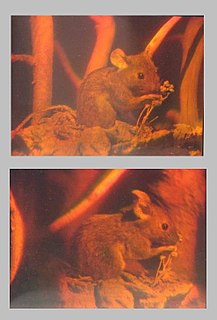
A hologram is an image that appears to be three dimensional and which can be seen with the naked eye. Holography is the science and practice of making holograms. Typically, a hologram is a photographic recording of a light field, rather than an image formed by a lens. The holographic medium, i.e., the object produced by a holographic process is usually unintelligible when viewed under diffuse ambient light. It is an encoding of the light field as an interference pattern of variations in the opacity, density, or surface profile of the photographic medium. When suitably lit, the interference pattern diffracts the light into an accurate reproduction of the original light field, and the objects that were in it exhibit visual depth cues such as parallax and perspective that change realistically with the relative position of the observer. That is, the view of the image from different angles represents the subject viewed from similar angles.
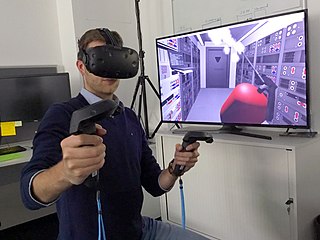
Virtual reality (VR) is an interactive computer-generated experience taking place within a simulated environment. It incorporates mainly auditory and visual feedback, but may also allow other types of sensory feedback. This immersive environment can be similar to the real world or it can be fantastical.

Stereoscopy is a technique for creating or enhancing the illusion of depth in an image by means of stereopsis for binocular vision. The word stereoscopy derives from Greek, Modern στερεός (stereos), meaning 'firm, solid', and σκοπέω (skopeō), meaning 'to look, to see'. Any stereoscopic image is called a stereogram. Originally, stereogram referred to a pair of stereo images which could be viewed using a stereoscope.
The quarterly journal of the ISU, Stereoscopy - the publication of 3D image-makers, is circulated to members. Apart from tuition in 3D photographic techniques, the Journal carries information and articles from around the world on new equipment, literature and all manner of related subjects. Many articles are illustrated with large 3D drawings and stereo photos. Since Issue 1/2007, Stereoscopy has been published in full color.
A major activity of the ISU is the organization of a Congress every second year in one of the major member countries. The 2007 congress was held in 2007 in Boise, Idaho, the 2009 congress was held in Gmunden, Austria, the congress 2011 was held in Egmond aan Zee, Netherlands and the 2013 congress took place in Ljubljana, Slovenia. The 20th ISU World Congress was held from September 6 to 11 2015 at the Busan Cinema Center in Busan, South Korea. The 21st ISU World Congress was held from August 8 to 14 2017 at the Hotel Irvine in Irvine, California, USA.

Idaho is a state in the northwestern region of the United States. It borders the state of Montana to the east and northeast, Wyoming to the east, Nevada and Utah to the south, and Washington and Oregon to the west. To the north, it shares a small portion of the Canadian border with the province of British Columbia. With a population of approximately 1.7 million and an area of 83,569 square miles (216,440 km2), Idaho is the 14th largest, the 12th least populous and the 7th least densely populated of the 50 U.S. states. The state's capital and largest city is Boise.

Gmunden is a town in Upper Austria, Austria in the district of Gmunden. It has 13,204 inhabitants. It is much frequented as a health and summer resort, and has a variety of lake, brine, vegetable and pine-cone baths, a hydropathic establishment, inhalation chambers, whey cure, etc. It is also an important centre of the salt industry in Salzkammergut.

Austria, officially the Republic of Austria, is a country in Central Europe comprising 9 federated states. Its capital, largest city and one of nine states is Vienna. Austria has an area of 83,879 km2 (32,386 sq mi), a population of nearly 9 million people and a nominal GDP of $477 billion. It is bordered by the Czech Republic and Germany to the north, Hungary and Slovakia to the east, Slovenia and Italy to the south, and Switzerland and Liechtenstein to the west. The terrain is highly mountainous, lying within the Alps; only 32% of the country is below 500 m (1,640 ft), and its highest point is 3,798 m (12,461 ft). The majority of the population speaks local Bavarian dialects as their native language, and German in its standard form is the country's official language. Other regional languages are Hungarian, Burgenland Croatian, and Slovene.
The 22nd ISU World Congress will be held from August 20 to 26 2019 in Lübeck, Germany.
A three-dimensional stereoscopic film is a motion picture that enhances the illusion of depth perception, hence adding a third dimension. The most common approach to the production of 3D films is derived from stereoscopic photography. In this approach, a regular motion picture camera system is used to record the images as seen from two perspectives, and special projection hardware or eyewear is used to limit the visibility of each image to the viewer's left or right eye only. 3D films are not limited to theatrical releases; television broadcasts and direct-to-video films have also incorporated similar methods, especially since the advent of 3D television and Blu-ray 3D.

A stereoscope is a device for viewing a stereoscopic pair of separate images, depicting left-eye and right-eye views of the same scene, as a single three-dimensional image.
A stereo display is a display device capable of conveying depth perception to the viewer by means of stereopsis for binocular vision.

A stereo camera is a type of camera with two or more lenses with a separate image sensor or film frame for each lens. This allows the camera to simulate human binocular vision, and therefore gives it the ability to capture three-dimensional images, a process known as stereo photography. Stereo cameras may be used for making stereoviews and 3D pictures for movies, or for range imaging. The distance between the lenses in a typical stereo camera is about the distance between one's eyes and is about 6.35 cm, though a longer base line produces more extreme 3-dimensionality.
Stereopsis is a term that is most often used to refer to the perception of depth and 3-dimensional structure obtained on the basis of visual information deriving from two eyes by individuals with normally developed binocular vision. Because the eyes of humans, and many animals, are located at different lateral positions on the head, binocular vision results in two slightly different images projected to the retinas of the eyes. The differences are mainly in the relative horizontal position of objects in the two images. These positional differences are referred to as horizontal disparities or, more generally, binocular disparities. Disparities are processed in the visual cortex of the brain to yield depth perception. While binocular disparities are naturally present when viewing a real 3-dimensional scene with two eyes, they can also be simulated by artificially presenting two different images separately to each eye using a method called stereoscopy. The perception of depth in such cases is also referred to as "stereoscopic depth".
A vectograph is a type of stereoscopic print or transparency viewed by using the polarized 3D glasses most commonly associated with projected 3D motion pictures.
Infitec GmbH is a family-owned company based in Gerstetten that develops, produces and markets products for the projection of 3D content. The registered name INFITEC is an acronym of Interference Filter Technology, which was invented and patented by the founder of the company, Helmut Jorke.

Scanography, more commonly referred to as scanner photography, is the process of capturing digitized images of objects for the purpose of creating printable art using a flatbed "photo" scanner with a CCD array capturing device. Fine art scanography differs from traditional document scanning by using atypical objects, often three-dimensional, as well as from photography, due to the nature of the scanner's operation.
Phantograms, also known as Phantaglyphs, Op-Ups, free-standing anaglyphs, levitated images, and book anaglyphs, are a form of optical illusion. Phantograms use perspectival anamorphosis to produce a 2D image that is distorted in a particular way so as to appear, to a viewer at a particular vantage point, three-dimensional, standing above or recessed into a flat surface. The illusion of depth and perspective is heightened by stereoscopy techniques; a combination of two images, most typically but not necessarily an anaglyph. With common (red–cyan) 3D glasses, the viewer's vision is segregated so that each eye sees a different image.
Underwood & Underwood was an early producer and distributor of stereoscopic and other photographic images, and later was a pioneer in the field of news bureau photography.
Thomas Richard Williams was a British professional photographer and one of the pioneers of stereoscopy.
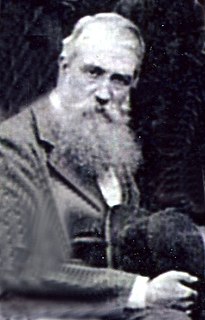
William England was a successful Victorian photographer specialising in stereoscopic photographs.

The Fujifilm FinePix Real 3D W series is a line of consumer-grade digital cameras designed to capture stereoscopic images that recreate the perception of 3D depth, having both still and video formats while retaining standard 2D still image and video modes. The cameras feature a pair of lenses, and an autostereoscopic display which directs pixels of the two offset images to the user's left and right eyes simultaneously. Methods are included for extending or contracting the stereoscopic baseline, albeit with an asynchronous timer or manually depressing the shutter twice. The dual-lens architecture also enables novel modes such as simultaneous near and far zoom capture of a 2D image. The remainder of the camera is similar to other compact digital cameras.

The 3D Center of Art and Photography is an American nonprofit educational institution in Portland, Oregon that opened in 2003. It was the first museum in the United States dedicated to stereoscopy. From 2003 to 2011, the Center was located in a small leased storefront on NW Lovejoy Street that presented exhibits open to the public. The Center closed its doors to the public on December 31, 2011, due to poor economic conditions and increased rent on its leased premises. The Center is currently engaged in an ongoing fundraising campaign to move to a location that will accommodate large groups of visitors.
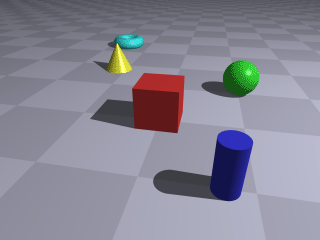
Wiggle stereoscopy is an example of stereoscopy in which left and right images of a stereogram are animated. This technique is also called wiggle 3-D or wobble 3-D, sometimes also Piku-Piku.
A stereographer is a professional in the field of stereoscopy and visual effects using the art and techniques of stereo photography, 3D photography, or stereoscopic 3D film to create a visual perception of a 3-dimensional image from a flat surface.
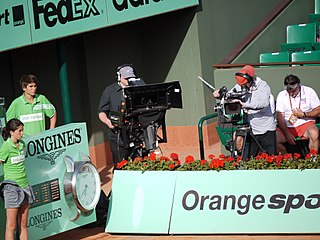
Stereo photography techniques are methods to produce stereoscopic images, videos and films. This is done with a variety of equipment including special built stereo cameras, single cameras with or without special attachments, and paired cameras. This involves traditional film cameras as well as, tape and modern digital cameras. A number of specialized techniques are employed to produce different kinds of stereo images.
The Van Hare Effect is a 3D stereoscopic viewing technique for creating or enhancing the illusion of depth in an image by means of stereopsis for binocular vision using psychophysical percepts. The Van Hare Effect creates the illusion of dimensionality, rather than actual dimensionality in the subject being viewed. The Van Hare Effect is achieved by employing the stereoscopic cross-eyed viewing technique on a pair of identical images placed side-by-side. In doing so, it artificially tricks the human brain and optical center into seeing depth in what is actually a two-dimensional, non-stereoscopic image. The illusion of depth is interesting in that even if the image pair is not itself originally stereoscopic, the brain perceives it as if it is.
Kim Timby is a photography historian based in Paris who teaches at the École du Louvre and works as a curator for a private collection specialising international nineteenth-century photography. From her research and teaching, Timby writes on the cultural history of photography as a technology.












